If you purchase an independently reviewed item through our site, we earn an affiliate commission. Read our affiliate disclosure.
Bee colonies are self-sustaining in nature. As a matter of fact, bees have survived and thrived for centuries without the need for human intervention. Once bees establish their colony they are able to locate, retrieve and utilize resources located miles away from the hive. They can manage to maintain themselves and even reserve honey for the future. However, there are instances when bees require a helping hand. This is where bee feeders come in handy. It is the equipment required for providing the bees with additional food resources. Bee feeders are essential for sustaining honeybees during the brief and specific situations when they are required.
Why and When do you need Bee Feeders?
The bee feeder is required by the bees only during specific situations. Feeding is essential for the bees whenever the colony is in short supply of food. If not provided, the bees may starve to death. However, those who keep the bee keeper on the hive throughout the year are doing it wrong. The motive behind the provision of a bee feeder is to lend a helping hand to the bees only when necessary and let the bees take care of themselves at other times.
Starvation and food shortage are common problems to any bee colony not only during cold seasons but also during summer. Any beekeeper who fails to monitor the beehive for food during summer should be blamed for food shortage and starvation.
To prevent bee death during cold months, put frames of food from other colonies along the edges of the cluster. You can also provide candy to the bees. Force this between the frames. Contact feeders are also ideal for supplementing the bee food.
Some of the times when a bee feeder is required include the following:
1. During Colony Establishment
The best time to provide the feeder is when a new colony has just been introduced, especially when it is brought in as a package. During such a time the bees are unfamiliar to the area and its resources. They therefore need support at this time.
2. Onset of Winter
Bees are always prepared for tough times. They can keep sufficient reserves during summer and fall. This can sustain them all through the winter season. Some beekeepers however find it necessary to offer a little support to the bees by feeding during fall as winter approaches. You can read more on this further down. For now, let’s dive into our list of the best bee feeders.
Overview of the Best Bee Feeders
10. Farmstand Supply Ultimate Hive Feeder for Beekeepers (2 pack)
This is a duo-feature unit bee feeder that can be placed on top of the frame or on the inner cover. It has a 1 gallon translucent tank that can easily be filled and replaced. It is also fitted with an automatic valve that ensures a uniform syrup level is maintained. The feeder is designed with a large feeding area, however spillages can occur if not setup properly. Its 2 feeders are compatible with a 10-frame medium super. Click here to read our full review of the Ultimate Hive Feeder for Beekeepers.
Check Price
9. Little Giant Farm and Ag BKTFDR2 2-Gallon Bucket Feeder
This is another good bee feeder that will come in handy when resources are scarce for the bees. It is well secured to keep robbers off the syrup and its simple design make it easy to use. It weighs 1.1 pounds and has dimensions of 10.5 x 10.5 x 7.5 inches.
Check Price
8. Toughtimbers Entrance Bee Feeder
This is a wooden entrance bee feeder that comes with a 1 feeder lid. It is a pine feeder weighing approximately 2 pounds with dimensions of 20 x 1 x 16 inches. The feeder works perfectly with a quart glass jar. It is one of the best ways for providing the bees with water all summer. The feeder comes with caps and extra caps are available for purchase.
Check Price
7. Toughtimbers Beehive 10 Frame Top Hive Feeder with Floats
This hive top feeder from Toughtimbers comes with a number of features designed to ensure the bees are sufficiently catered for during the tough times. It is fitted with floats and will perfectly fit a 10-frame hive. The unit is delivered stapled, glued and ready to install. All you need to do is set it up on the top of the colony, fill it with the syrup, cover it with the inner cover then replace the top. Several compartments have been provided to prevent the bees from drowning and with the center access, the bees can easily access the syrup.
This feeder weighs 15 pounds and has a dimension of 24 x 20 x 6 inches. It has a capacity of 2 gallons.
Check Price
6. Honey Hive Farms Boardman Entrance Feeder
This front entrance feeder from Honey Hive Farms offers maximum convenience in feeding the bees. You can simply check the syrup without the need to open the bee hive. It is a 8 ounce feeder with dimensions of 6.8 x 4.8 x 1.8 inches. It can be used with an inverted glass that should be bought separately.
Check Price
5. Little Giant Farm & Ag FRAMEFDR Frame Feeder
This 1.4 pound feeder comes in handy when outside sources of food are not available for the bees. It fits perfectly in the place of a frame within the brood box. The feeder has been designed with uttermost ingenuity so as to protect the bees from drowning. It can hold 3 quarts of syrup and does not require tools to assemble.
Check Price
4. Harvest Lane Honey FEEDBB 102 Entrance Feeder
This highly durable entrance feeder will provide sufficient resources for the bees throughout the hard times. It is a 2.9 ounce feeder with dimensions of 5 x 5 x 0.5 inches. The feeder is easy to use and can be monitored without the need to open up the entire hive. It can be used with a glass jar which should be bought separately. It is however not recommended for winter feeding.
Check Price
3. Mann Lake Entrance Feeder
This is a 0.2 pounds feeder with dimensions of 1.2 x 3.25 x 5.5 inches. It can easily be installed at the entrance of the hive and allows the beekeeper to check the resource levels without disturbing the bees. The unit is also easy to clean and allows one to use a separate Mason jar at the hive’s entrance. It is a durable unit but not ideal for feeding during cold seasons.
Check Price
2. Harvest Lane Honey FEEDBBG 102 Entrance Feeder
The 1.1 pound entrance bee feeder comes with some amazing features. It is big enough to provide sufficient provisions for the bees during the desired seasons. The feeder is easy to install and can last for many years. It has a dimension of 5 x 5 x 10 inches and is manufactured in the US. Once you install it you can monitor the resource levels without the need to open the hive and disturb the bees.
Check Price
1. Foxhound Bee Company Front Entrance Honey Bee Feeder
Providing sustenance for a honeybee colony is required of every beekeeper at least once in their beekeeping operation. This Front Entrance Honey Bee Feeder and Lid is your reliable companion when you need to help support a colony of honeybees until it can collect enough nutrition for itself. This bee feeder is white plastic equipment used with most of its body outside the beehive. It is placed at the entrance of the beehive so honeybees leaving the beehive encounter the feeder. This feeder is for use in feeding sugar syrup and water to honeybees. Some part of it enters the beehive while the rest remains outside the beehive.
A jar containing the liquid you are feeding your honeybees is placed on one end of the feeder with a lid for the jar. This feeder takes most standard sized bee feeder jars. The jar stays in an upside down position and releases its contents into the feeder. In the beehive, the end of the feeder that is in the beehive is a multi-step entrance into the feeder. This feeder has 3 such steps. The first step is 3/8 inches high from the floor of the beehive. It is followed by a second step that is ¾ inches high. The third step is 1 1/8 inches high. The feeder measures 5 ½ inches long from the tip of the first step to the end of the sugar jar lid area.
Using this bee feeder is easy so both beginner and experienced beekeepers are able to get the best from the feeder in their beekeeping operations. What’s more, this bee feeder is made using high quality and durable plastic material. It is safe for use in beehives from which you will harvest products including honey for human consumption.
Check Price
How to Feed the Bees
Feeding should begin once the hive feels light at fall. Feeding with sugar syrup that is a mixture of 2 parts sugar to 1 parts water should begin immediately. As temperatures keep dropping to under 50°F or 10°C switch the food to the recommended cold weather feed or feed that work well for such levels of temperature.
Liquid feed should be provided to the bees when temperatures are warm, preferably 50°F or 10°C. This should be placed in one of the internal feeders so as to keep the bees from going outside. It is also quite challenging for bee robbers to get the food when kept within the beehive. A mold inhibitor should also be added. Fill one super with sugar cakes if you expect the temperatures to tremendously drop. A mountain camp rim or a candy board will also suffice if the temperatures are expected to drop below 50°F or 10°C.
Feeding should never be a one-time affair but rather an ongoing task. Keep checking the hives occasionally, especially in dry and sunny days. The honey-rich frames should be moved closer to the cluster and where possible feed provided. Do not be deceived by the fact that temperatures are rising with onset of spring. Food shortage can happen even during warmer months if food stores are not monitored and regulated accordingly. This therefore means that honey harvesting should also be controlled otherwise you risk depleting the bee honey stores.
What not to Feed the Bees
If you thought survival through winter is the end of all struggles to the bee colony, then think again. Some bee colonies that survive the harsh winter end up dying in early spring for other reasons. One of the main reasons for that is food shortage, since all stores of food are depleted when winter ends. To further aggravate the situation, the bees may die if fed the wrong food. Making it through the harsh winter can end up being the beginning of a nightmare to any beekeeper, if he or she ends up losing an entire bee colony. Winter feeding for the bees should be undertaken with lots of caution.
Remember not to feed your bees with the following:
- Avoid honey that is sourced from unknown sources when feeding your bees. Honey can harbor disease causing spores or pathogens that can be spread to your healthy bee colony. American Foulbrood is one of those diseases easily spread through honey and can easily spread from one hive to the other.
- Avoid sugar with additives. Bees are very sensitive to any additives or colorings and therefore foods with such substances should be avoided. Avoid brown sugar since it is rich in molasses. One other type of food to avoid is commercial fondant since it contains colorings or and flavorings. Such foods are predisposing factors for honey bee diseases such as dysentery. This is a highly contagious bee disease that can easily spread between bee hives and bee colonies.
- High fructose corn syrup should be avoided as well since it contains Hydroxymethylfurfural (HMF). This can poison the bees and it is more common in old syrup or any kind of syrup that has warmed up.
Improper feeding is one of the main causes of bee die-out. Most beekeepers unknowingly feed their bees on foods they do not know their sources or additive-rich feed. You should desist from feeding your bees with such foods.
What you can Feed the Bees
Honey is the best food for the bees and that is precisely why they make honey. Honey stores are not meant for the beekeeper but rather for the survival of the bee colony. Therefore, it is the best food for feeding the bees. Those with a number of hives that are excellent producers will not have problems in the cold season or summer season when there is a shortage of food. The full supers from rich beehives can be exchanged with poorly performing hives. If you do not have extra honey to feed the bees, then you should feed the bees with the recommended alternative bee foods. These include the following:
- Sugar syrup that is made from white table sugar is your next best thing to feed the bees if you are short of honey supply. Ensure you mix sugar with water in a ratio of 2:1. That is two parts sugar against 1 part water. The same proportion should be maintained irrespective of the quantity of your mixture. The same proportion applies to winter or fall supplements. This ensures a perfect balance of the sugar content as well as the water.
- The second alternative is fondant sugar cakes or granular sugar. This is the best alternative for those in areas where temperatures fall below 50°F or 10°C. Sugar syrup will not be ideal in such areas since it will certainly freeze when temperatures fall below certain points.
- Table sugar is the next best option. However, table sugar lacks the micronutrients that are available in honey. To make up for this, feed stimulants that are rich in essential oils should be added. This includes Honey-B-Healthy or Pro Health which will boost the table sugar.
Feeding with the recommended feed should begin at the onset of cold weather. It never hurts to keep feeding your bees with sugar syrup even when there is no food shortage. Being proactive in feeding the bees in all seasons helps guarantee food safety and the honey stores will last longer. It helps balance the feed for the bees instead of depending solely on honey.
Types of Bee Feeders
There are many types of bee feeders out there and each has its pros and cons. You can actually do it yourself (DIY) and get a perfectly working bee feeder. Most of them are quite easy to design and require little knowledge. As a matter of fact, most hobbyists and professional beekeepers design their own feeders. But, this article isn’t about that. This article will look at the different types of bee feeders available.
1. Open Air Feeders
As the name implies, these are simply feeders that are constructed out in the open. They are the most insecure and tend to attract all types of wildlife including: wasps, skunks, bears, birds, possums, raccoons, and many others.
In terms of safety, these feeders are not safe for the bees since it encourages the transmission of diseases, parasites, and pests. There is also a tendency for bees on open feeders to fight. This drastically weakens the bees and eventually leads to weak hives. Though this types of feeders are effective, they should be avoided by all means possible.
2. Entrance Feeders
These are the most popular with beekeepers. They are made up of two parts: an inverted syrup container placed outside the hive and a tray for feeding placed at the hive entrance. They are quite easy to monitor and does not disturb the bees when checking or refilling the syrup.
One of the concerns with entrance feeders is that they hold very little syrup and during winter season the liquid will freeze. It can also be invaded by robber bees since it lies on the entrance to the hive.
3. Division Board or Frame Bee Feeders
These are simply plastic bee feeders that are the size of a brood frame and normally take the place of one of the frames. They are ingenious designs that are situated inside the hive. These feeders are ideal for keeping robbers and invaders off the bee syrup. They also have a bigger capacity and that means it takes longer to refill. They can also be refilled easily. However, their design is meant for the bees to crawl out easily without drowning. Nonetheless, bees still drown in these feeders. The various designs that have ladders, floats, or rough sides still drown bees.
One other challenge associated with division board feeders is that the bees will build comb inside the feeder when left empty.
4. Internal Hive-Top Feeders
This type of bee feeders is popular with most beekeepers since it is well secured against invasion. They are normally fitted on top of the brood boxes just beneath the cover. They have a bigger capacity and are easy to fill. Different models of internal hive-top feeders have their own unique way of preventing the bees from drowning.
One of drawback associated with this type of feeder is that when you are forced to move it when full for whatever reason, the syrup will splash everywhere.
5. External Hive-top Feeders
These types of feeders have a simple design. They are basically a container inverted over the entrance in the hive’s inner cover. They can simply be placed on top of the hive or alternatively be enclosed in an empty super. It is prudent to keep the feeder closed so as to prevent it from getting displaced by wind or animals. They hold plenty of syrup and since the syrup is not exposed to the air, it does not mold.
One of the problems associated with external hive-top feeders is that they are extremely heavy. They pose a great risk of slipping during rainy days and this may spoil the entire hive. You can use plastic pails instead since they are easier to use. This type of feeder is mostly used by commercials beekeepers.
6. Baggie Feeders
This type of feeder is simply a spacer rim that allows you to place a plastic zipper bag full of syrup for the bees. Once this bag is in place a slit is cut on it for the bees to sip the syrup. It is the safest method of feeding the bees. As a matter of fact, no bee dies when this type of feeder is used in the hive. It is also extremely difficult for the syrup to freeze since cluster of bees keep it warm even during the cold seasons. It is also easy to add mite treatments with the syrup since the rims are expansive.
On the downside, the plastic bags in baggie bee feeders are used once and need to be disposed. This is not environmentally friendly. This can also be expensive since you buy a new one every time.
Honeybee Behaviour During the Cold Months
Have you ever wondered what bees do during the cold season? Well, for humans, winter is a time to spend indoors and for some animals they hibernate. Most adult insects die during this season whereas others migrate. As for the bee colony, it stays active even during these chilly months. A single honey bee may not survive the chilly winter given the fact that it is cold-blooded. However, the collective relationship among bees enables them to generate some heat that supports their survival during this time. The bees gather as a cluster during winter and the colder the temperature, the tighter their cluster becomes. The bees also vibrate their wing muscles when cold so as to generate more heat.
Honey bee behaviour during the cold months is varied depending on bee colony. Some bees survive the cold winter on sugar syrup then thrive at end of the cold season. With other bee types, the experience may be completely different. Some can die out during the cold season with full honey supers glaring at them. The reason may be due to their inability to reach out to these stores of honey when it is most needed.
1. Seek Warmth
As stated earlier, honeybees seek warmth when extremely cold. Other types of insects may never withstand the winter months since most adults die. Some other insect species move to other areas during winter whereas others hibernate all throughout the winter. The honeybee colony has to remain active during this time otherwise chances of survival would be minimal.
The bees huddle together in what is referred to as “winter cluster”. Some of the bees remain outside the cluster to as to act as an insulation shell, to prevent the heat from dissipating from the hive colony. As temperatures fall, the bee cluster becomes tighter and the bees begin to vibrate their wing muscles so as to generate more heat when the cuddling is not sufficient.
The need for heat among bees increases honey consumption since this is their sole source of fuel. The honey they normally store is not meant for you and me (although we take it anyway). It is stored in preparation for the hard times and winter season is one of them. At this time pollen and nectar are not available. As a matter of fact, a single bee colony will consume between 60 to 80 pounds over the winter season. This amount of honey can only be sourced from within the hive. An insufficiently supply of honey can result in massive deaths within the bee colony.
2. Hive Cleanup
This is an activity carried out by the bees as one of their winter chores. This is done precisely during the occasional warm winter days. Bees are known for their meticulous tendency to stay clean and hygienic. Some of the winter chores they undertake include: removal of the dead from the hive, hauling of the dying or diseased brood. These activities are mainly carried out during the productive months but bees will never hesitate when they get a chance during warm winter months. They will always clean house no matter how cold it might be.
One of things that most beekeepers are worried about is the sight of hundreds of bees that have died outside the beehive. Scary as it may be, this in most cases is a normal occurrence among bees. The bee colony will always reduce depending on the climate. In fact, most bee colonies will drop from 60,000 bees in summer to about 10,000 bees only when spring starts. In instances where the bee colony deteriorates in numbers, it becomes difficult to survive the cold season. This results in what is referred to as a “dead-out”. That notwithstanding, bees have to clean the hive and in cold months they have lots of work to do.
3. Cleansing or Poop time
The yellow spots and carcasses that are a common sight outside the hive during the cold season, gladden the heart of the beekeeper since it shows the bees are alive. The warmer months of the winter allows the bees to engage in what is referred to as “cleansing flights”. Their natural instinct to stay clean and hygienic drives the bees to venture outside the hive for a potty break. The bees will never defecate in their hive unless they are forced by medical problems like dysentery.
Bees will take advantage of every opportunity to leave the hive and relieve themselves. They will leave the cluster when temperatures allow and this can be identified by the yellow droppings sighted on the snow outside the hive. In some instances of extremely cold temperatures some daring bees can still venture outside to eliminate.
4. Procreation
The queen’s major role is egg-laying. This is mainly carried out during warm months and is followed by a broodless period, usually November and December. The egg laying picks up in late December, irrespective of the outside temperatures. The queen will initially lay a few eggs then lay more eggs as the months get warmer. Increased feeding also stimulates the queen to lay more eggs.
Bees consume more honey when cold since more energy is required to maintain a constant temperature for brood rearing. Low food stores can make life unbearable to the bees since the workers cannot leave the cluster in order to get nectar and pollen.
Conclusion
Bee feeding is essential for the survival of the bee colony. The bees are usually in dire need for feeding during the onset of cold months since pollen and nectar are not available during this time. Feeding should also be undertaken even when honey stores are full as a way of regulating food intake and guaranteeing food safety for a long time. Feed the bees with the right food and in the correct way as well.
With the wide variety of bee feeders in the market, you can never run short of a choice (and you can even make your own bee feeder). The best bee feeders are essential for the survival of the bees when times are hard. However, you should remove it when it is not needed. For information on how to add feeders to your beehive, click here.
What do you think of our picks of the best bee feeders? Which feeder(s) do you think should be added to this list? Leave a comment below and let us know.
 BeeKeepClub Resources and Guides for Beekeepers
BeeKeepClub Resources and Guides for Beekeepers
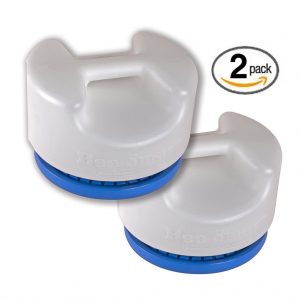
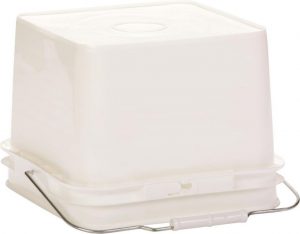


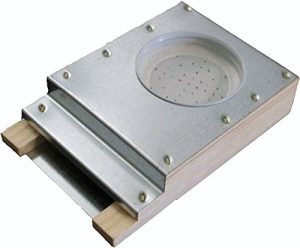
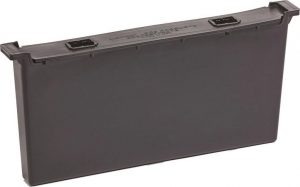

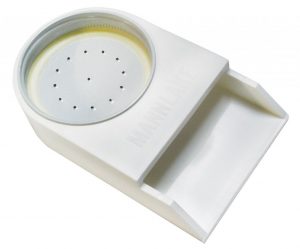
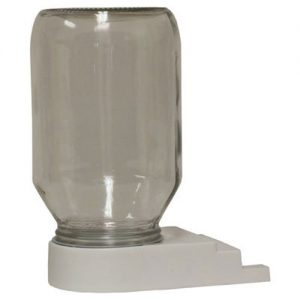

I like the Apis Rapid Bee Feeder because I like the idea of the bees not having to come out into the box to eat. This reduces exposure to the bees to colder air. Feeder is set over the hole on the hive cover or super cover depending on set up. Syrup or dry sugar can be used in this type feeder I think
Hi, thank you for your comment.
[…] These are the most popular with beekeepers. They are made up of two parts: an inverted syrup container placed outside the hive and a tray for feeding placed at the hive entrance. They are quite easy to monitor and does not disturb the bees when checking or refilling the syrup. via […]
[…] are lots of kinds of bee feeders on the market and every has its professionals and cons. You possibly can really do it your self […]
[…] feeders. But, this article isn’t about that. This article will look at the different types of bee feeders […]
[…] such as a bee suit, boots, and gloves. Other requirements include the bee smoker, the hive tool, a bee feeder, and of course the […]
[…] inclined) or purchase an already-built hive. The other things you will need are the bee smoker, bee feeders, beekeeper suit, beekeeper hat, and veil. Some manufacturers are smart enough to package the […]